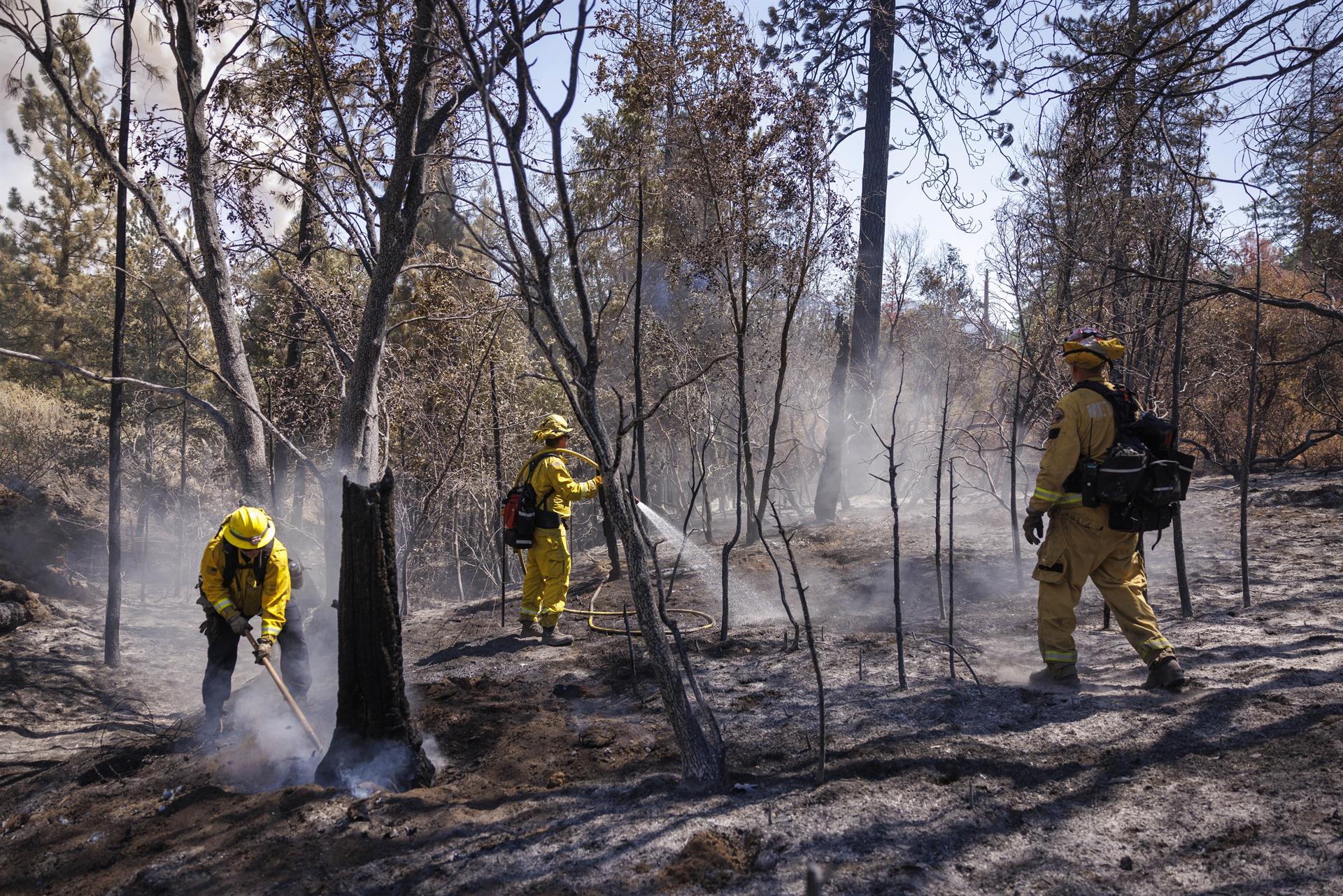Firefighters have contained a quarter of the fire near Yosemite National Park that started last Friday in California and has devastated more than 7,310 hectares in Mariposa County as of Tuesday, according to the state agency CalFire.
“Work crews continue to provide structure defense,” the agency, which keeps more than a dozen roads in the Sierra National Forest closed, said Tuesday.
He added that persistent drought, combustible material and tree mortality continue to contribute to the spread of the Oak fire, which is 26% controlled so far.
CalFire has indicated that humidity levels were slightly higher last night, while smoke caused by the fire has decreased visibility north of the burning area.
Authorities have confirmed damage to 41 residential or commercial structures, and Cal Fire has mobilized 24 helicopters, 302 pump trucks, 82 backhoes, 68 tanker trucks and nearly 3,000 firefighters.
The wildfire near Yosemite National Park has continued to spread and its smoke already reached the San Francisco Bay area on Monday, located about 250 kilometers west of the affected area.
Thousands of residents have escaped the fire, one of five currently active in California, in the foothills of the Sierra Nevada, a region experiencing the worst drought in decades.
California Governor Gavin Newsom has declared a state emergency in that county where more than 3,000 people have abandoned their homes. Electricity service in the area was interrupted on Friday.
Authorities have ordered evacuations in some parts of Mariposa County to the south and east where the flames continue to spread out of control.
California, like most of the United States, has experienced weeks of very high temperatures, and in recent years that West Coast state has been the scene of more extensive wildfires.
The so-called “Oak Fire” began as firefighters made progress in their battle against an earlier fire, called Washburn, that burned on the edge of a giant sequoia forest at the southern edge of Yosemite National Park.
“The vegetation is very receptive to new specific fires due to the hot, dry climate and drought. “Heavy fuels, strong winds and low humidity also influence fire behavior,” the Californian agency noted.

